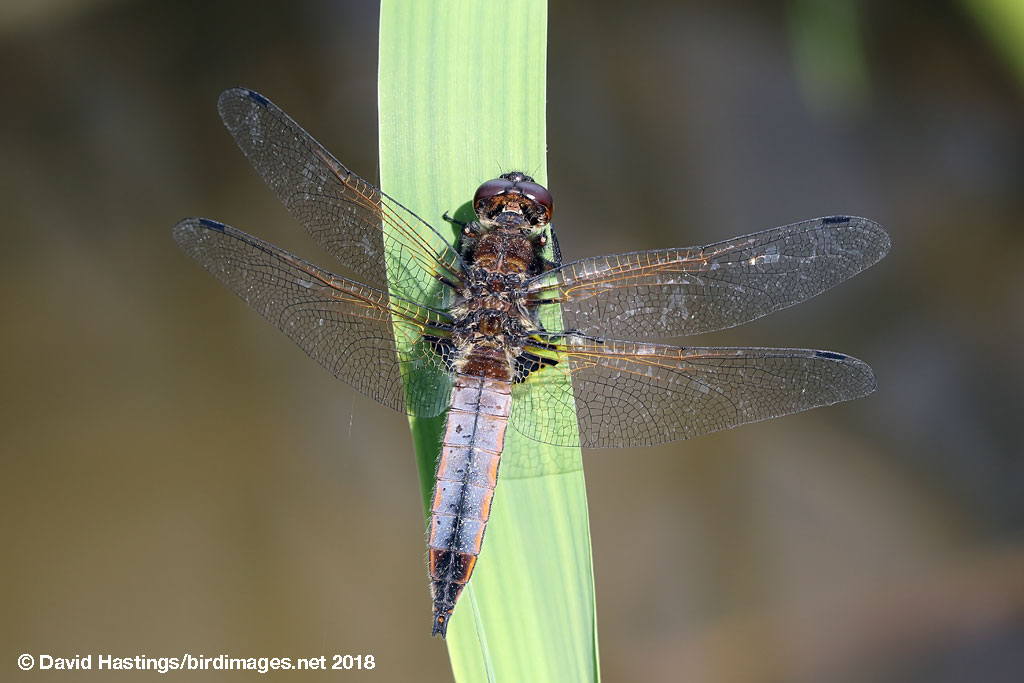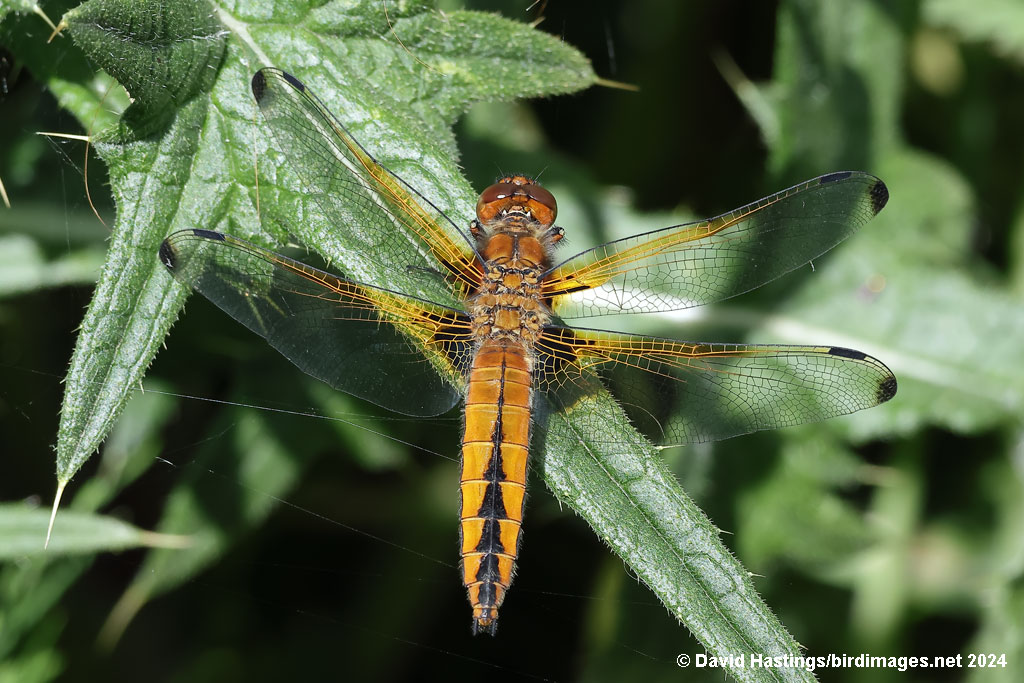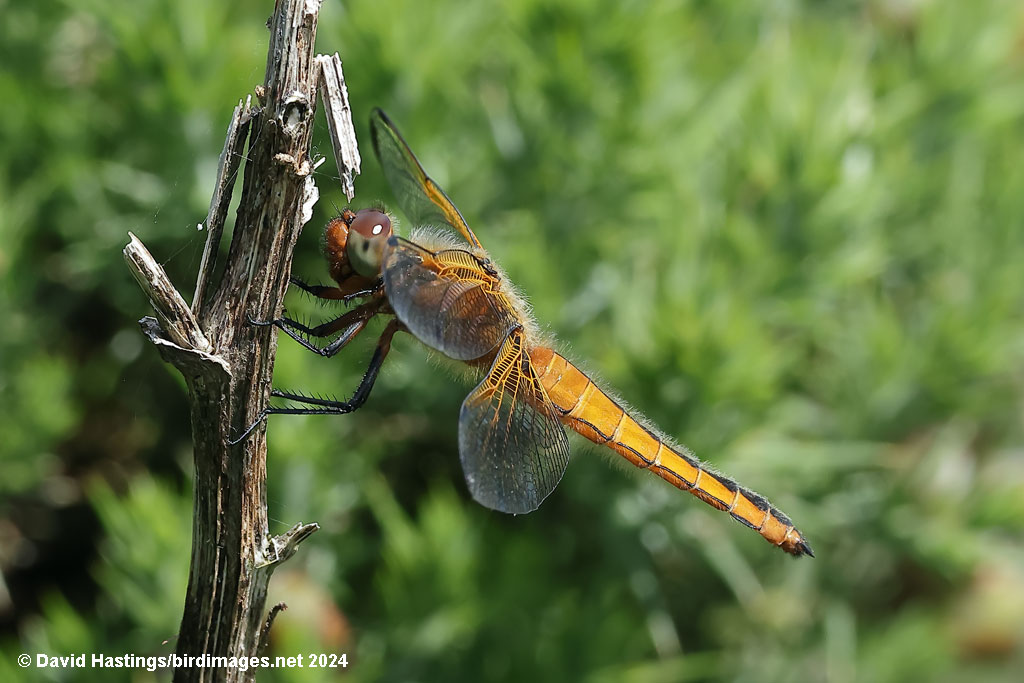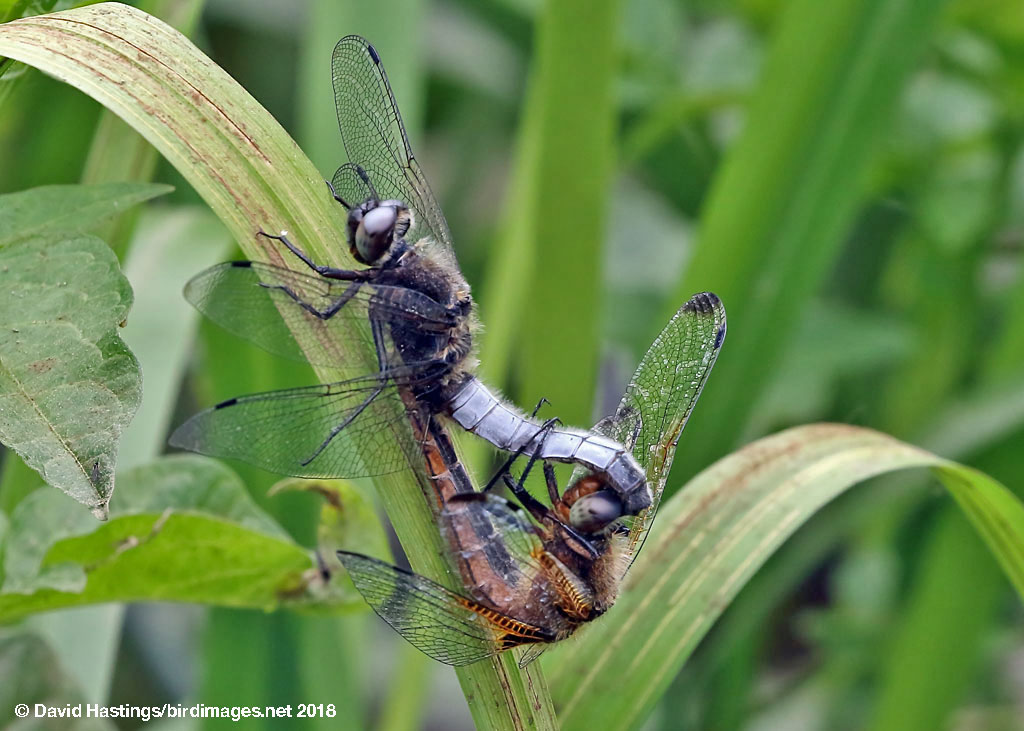Scarce Chaser (Libellula fulva) | Species | ||||||||||||||||||||||||||||||||||||||||
Male. Taken at Barnwell Country Park, Northants, on June 10th 2018. (© David Hastings) (1/500th sec at f14. Click image for larger version) Immature male. Taken at Barnwell Country Park, Northants, on June 10th 2018. (© David Hastings) (1/200th sec at f14. Click image for larger version) Female. Taken at Pewsey Downs, Wilts, on June 5th 2024. (© David Hastings) (1/800th sec at f11. Click image for larger version) Female. Taken at Pewsey Downs, Wilts, on June 5th 2024. (© David Hastings) (1/800th sec at f11. Click image for larger version) Pair in cop. Taken at Barnwell Country Park, Northants, on June 8th 2018. (© David Hastings) (1/250th sec at f14. Click image for larger version) DescriptionWing span: 64 - 76mm; Body length: 42 - 45mm Immature male Scarce Chasers are a vivid orange colour, which turn into black and grey-blue adults. Females are brown. Both sexes may have dark wing tips. It is found quite widely in central and SE Europe, but is scarce in the British Isles. The Scarce Chaser requires a specific combination of water quality and habitat structure. Reedy borders are favoured. Slow-flowing rivers and streams, abandoned canals, ox-bow lakes, etc, are typical habitats. Nymphs take two years to mature. Adults are on the wing from the end of May to early August. Males frequently perch on waterside plants, making darting flights between perches. The Scarce Chaser is a Red data list species in the UK. Earliest UK sighting: 26th May ; Latest UK sighting: 10th June Sightings
| |||||||||||||||||||||||||||||||||||||||||





